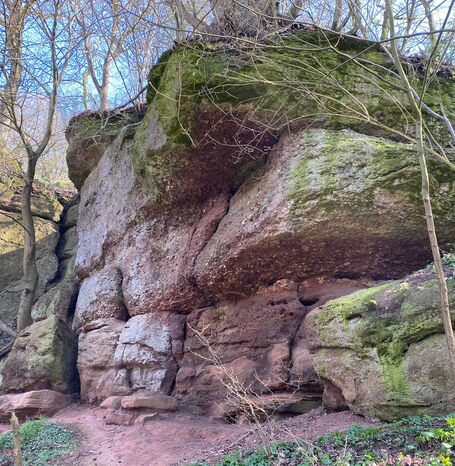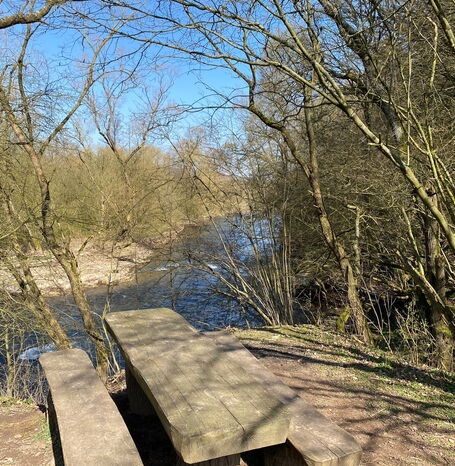The rocks of the Ederstede cliff were formed about 255 million years ago in the younger part of the Permian period, more precisely the Zechstein. Above the 5-6m thick, finely bedded gravelly sandstones of the "Geismarer Schichten" in the lower part of the cliff slope, coarse conglomerates, clay clasts and gravels follow up to the upper edge of the terrain. These are deposits of river systems, which occur here instead of marine or lagoonal sediments. The river systems transported out weathering debris from the western mountains and deposited sands and gravels that today form the reddish rocks of the Ederstede. While the rocks were formed during the Permian period, the morphology of the Ederstede was formed much later during the most recent period of Earth's history during the Quaternary period (beginning 2.6 million years ago). The Quaternary is characterized by strong climatic fluctuations with large-scale glaciations that reached Central Europe. Especially at the end of one of those cold periods the river Eder was very active and could erode strongly into the underground by means of the transported debris. This is how the steep slope of the Ederstede was formed.
The Ederstede thus not only provides insights into a time 255 million years ago, but also into a more recent geological epoch, the Quaternary, which decisively influenced the morphology of our region and still does today.
The Ederstede is located along the cliff path, which is marked with a blue K along the way. You can get more information at the Ederbergland-Touristik!



